29 September 2017
The Bosphorus, which divides the city from north to south, separates two continents, renders Istanbul distinct for western painters, offers the most picturesque spectacles for western artists. At times, as it is in Ziem’s paintings, the Bosphorus is the most important element in creating a storybook atmosphere for Istanbul. The paintings that have been produced either by painters who have been to Istanbul or by painters who have never been here, whose paintings don’t match the reality with their every detail, all become recognizable when the Bosphorus and the monumental structures are brought together. Furthermore, public recreation areas such as Göksu, ferries, boats, and fishermen elaborate and present a rich visual repertoire on the daily life of the city.
We have prepared a selection for you from the sceneries found in the Suna and İnan Kıraç Foundation Orientalist Painting Collection!
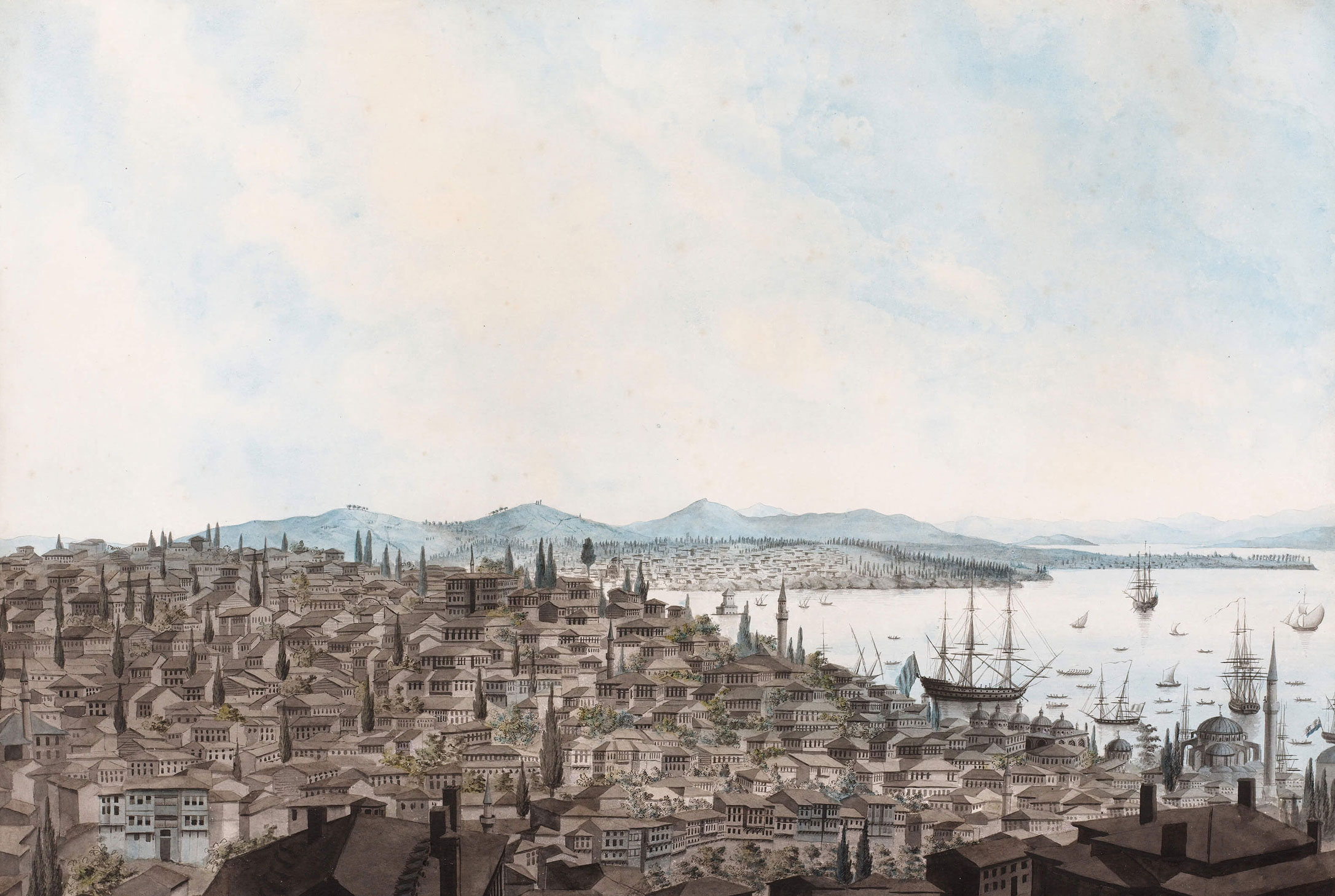
View of İstanbul from the Galata Tower, Antoine Ignace Melling, 1787, Watercolor on paper, 56.5 x 74.5 cm.
In this particular work, the artist depicts the view to the left of Kılıç Ali Paşa Mosque as seen from the Galata Tower. Presented in scrupulous detail by this master of drawing, the dense urban structure on the ridges of Pera dominates the painting. In the background, Üsküdar also stands out as an area of intense urban development. Such details offer the viewer an idea about the civil architecture and the urban texture of the period. With the sailboats docking in, the busy marine traffic of the Tophane Port is included in the painting; caiques and sailboats of various sizes represent the active seafaring life at the Bosphorus. The date and the signature of the artist are inscribed on the wall that borders the painting in the lower section.
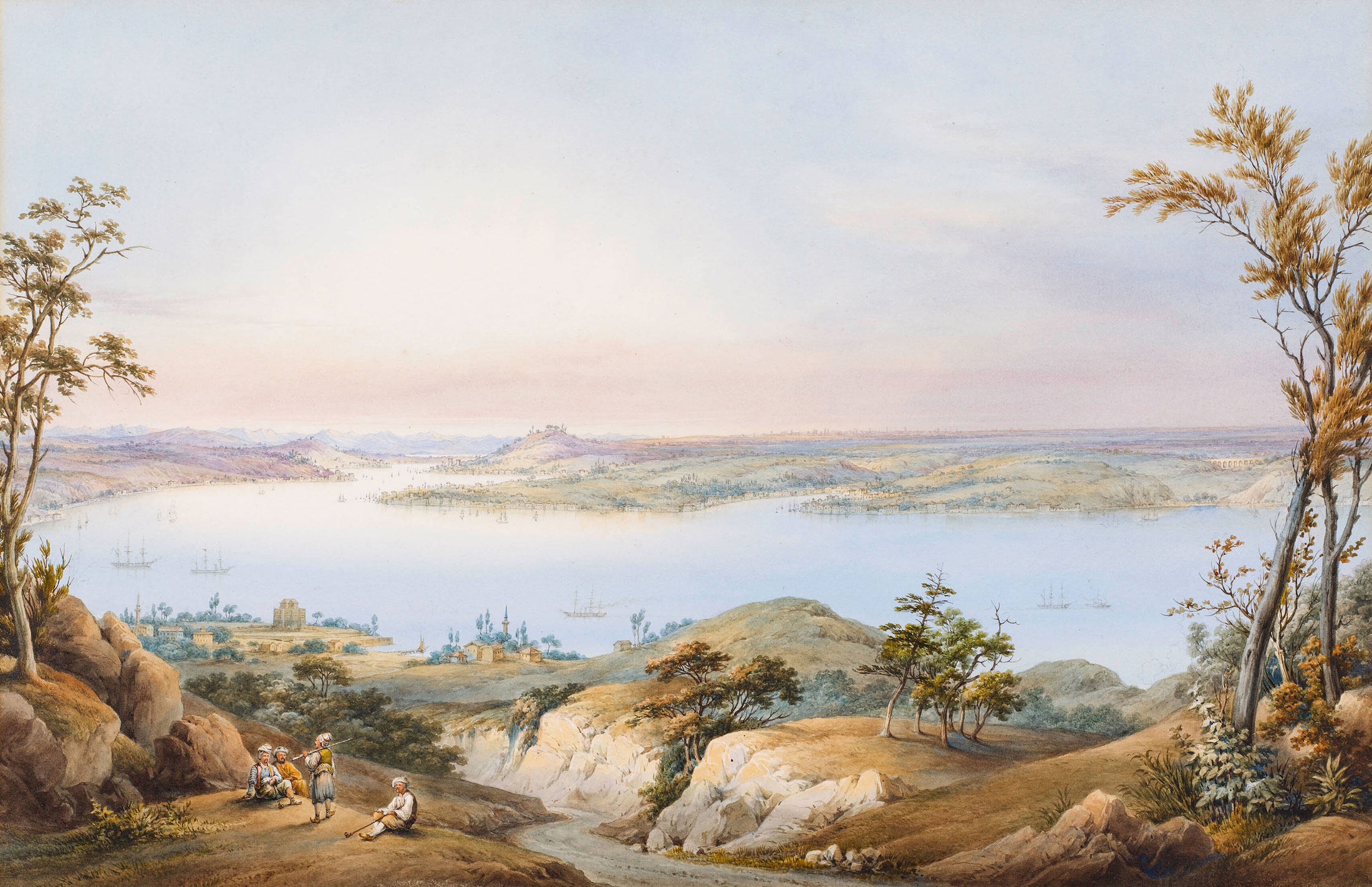
Bosphorus, Joseph (Guiseppe) Schranz (?), Mid-19th Century, Watercolor on paper, 33 x 54 cm.
Even though this Bosphorus seascape is unsigned, the style suggest that it could be made by Schranz. Enfolded by two tall trees, the composition depicts the pastoral landscape of İstanbul, rather than the urban texture and life. Viewing the Bosphorus from the ridges of Beykoz, the artist included villagers smoking pipes and chatting in the foreground, as well as a vague silhouette of the city in the background. Due to the presence of a steam boat, the painting is dated to post-1828, the year in which steamboats arrived in İstanbul.
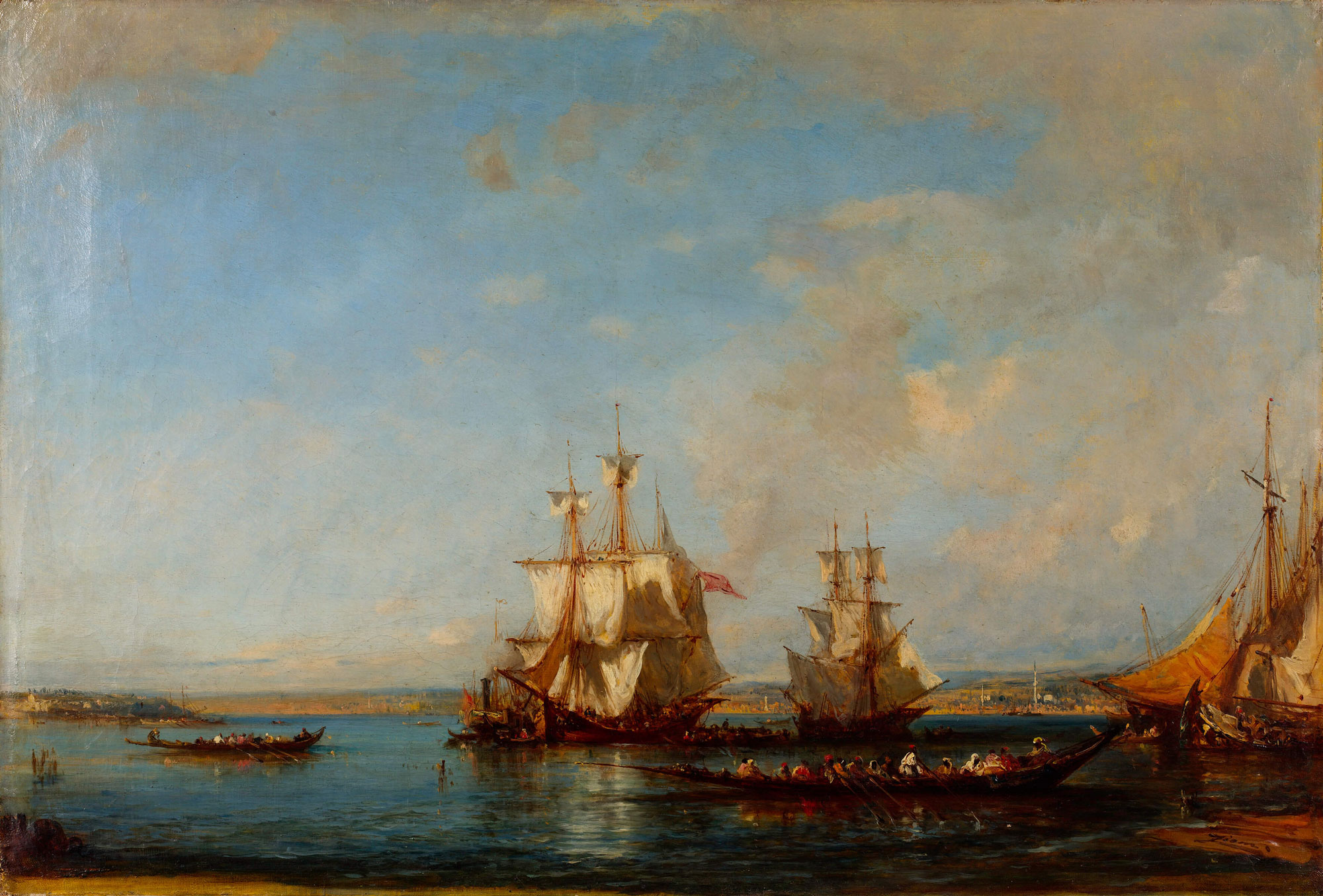
Caiques and Sailboats at the Bosphorus, Félix Ziem, Second half of the 19th century, Oil on canvas, 55 x 81 cm.
Felix Ziem must have completed this painting, in which he depicts the animated life of the Bosphorus, after having returned to his country, using the sketches he made in İstanbul. While Ziem was an artist who was able to produce works of various styles such as portraits, still life, genre scenes, and historical depictions, he is primarily renowned as a landscape artist; he was an active member of the Barbizon school, which primarily focused on the depiction of nature. In this painting, İstanbul is represented through a few mosque silhouettes in the background. Nonetheless, as in his Venetian scenes, the painting emphasizes the picturesque union of the city, the sea and human figures, which have been reduced to mere color stains. Ziem, who produced his own paints from natural pigments, influenced other artists with the use of color in his paintings. Van Gogh, for instance, once noted that he would like to “make blues like Ziem does”. The artist is known to have used “lapis lazuli” for the dominant blue color in this painting.
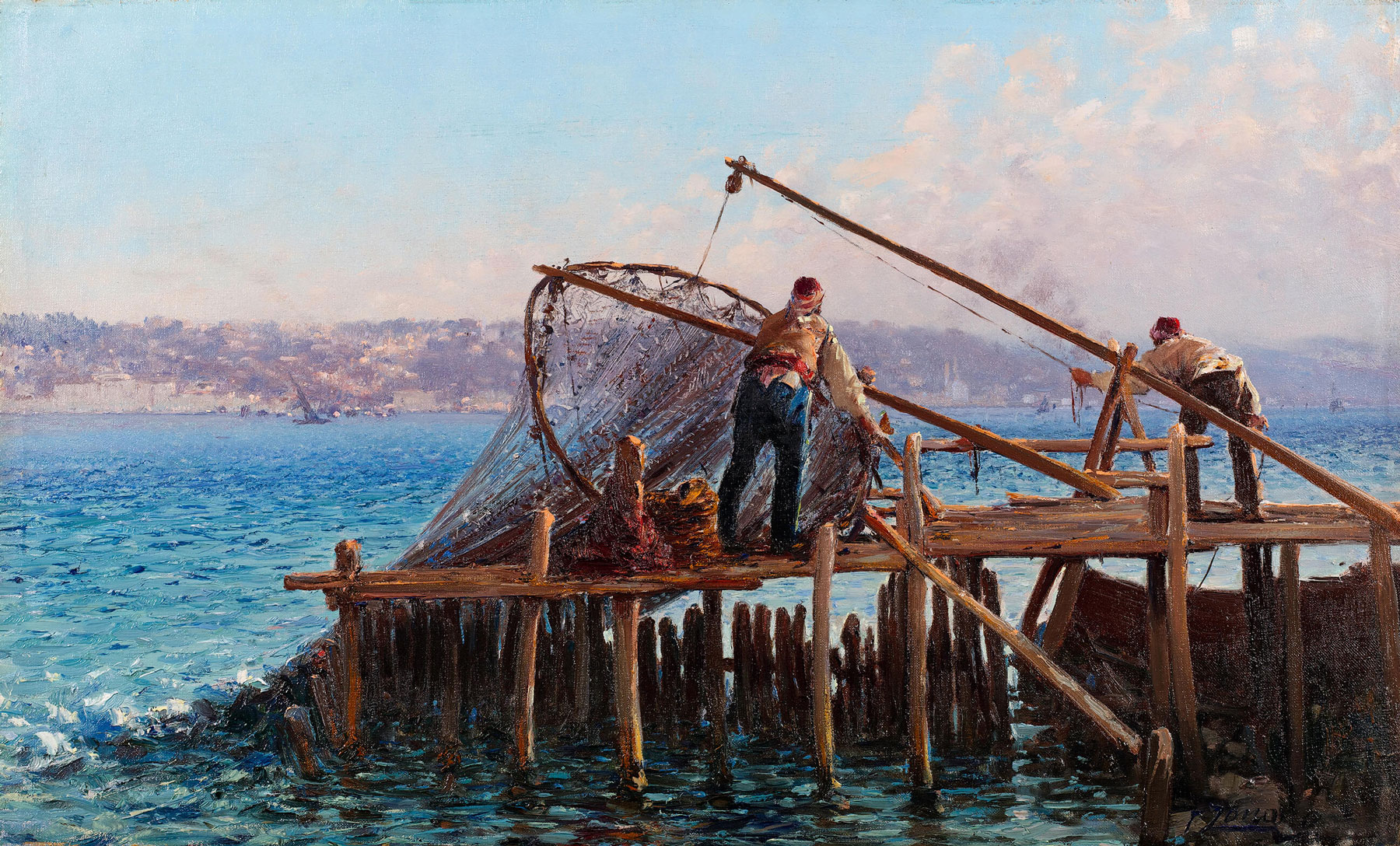
Fishermen Bringing in the Catch, Fausto Zonaro, 1891 – 1910, Oil on canvas, 40.5 x 67 cm.
It is possible to discern traces of French Impressionism in the works of Zonaro, who had the opportunity to meet with Impressionist artists when he went to Paris in 1888. During his stay in İstanbul, Zonaro created a number of paintings depicting the life in the city with rapid brushstrokes and vivid colors. In this work, which reveals the Impressionist technique particularly evident in his landscapes, he presents one of the intriguing aspects of life in İstanbul. The 1925 book by the French author Adolphe Thalasso entitled, Deri se’adet ou Stamboul Porte du Bonheur, Scènes de la Vie Turque (Dersaadet or the Gate of Felicity, Scenes from Turkish Life), which was illustrated by Zonaro and published in Paris, includes a lithograph based on this painting the artist created when he lived in İstanbul. This composition, which appears in the “City and Life” chapter of the book, is elaborated with the addition of a few fishermen figures.
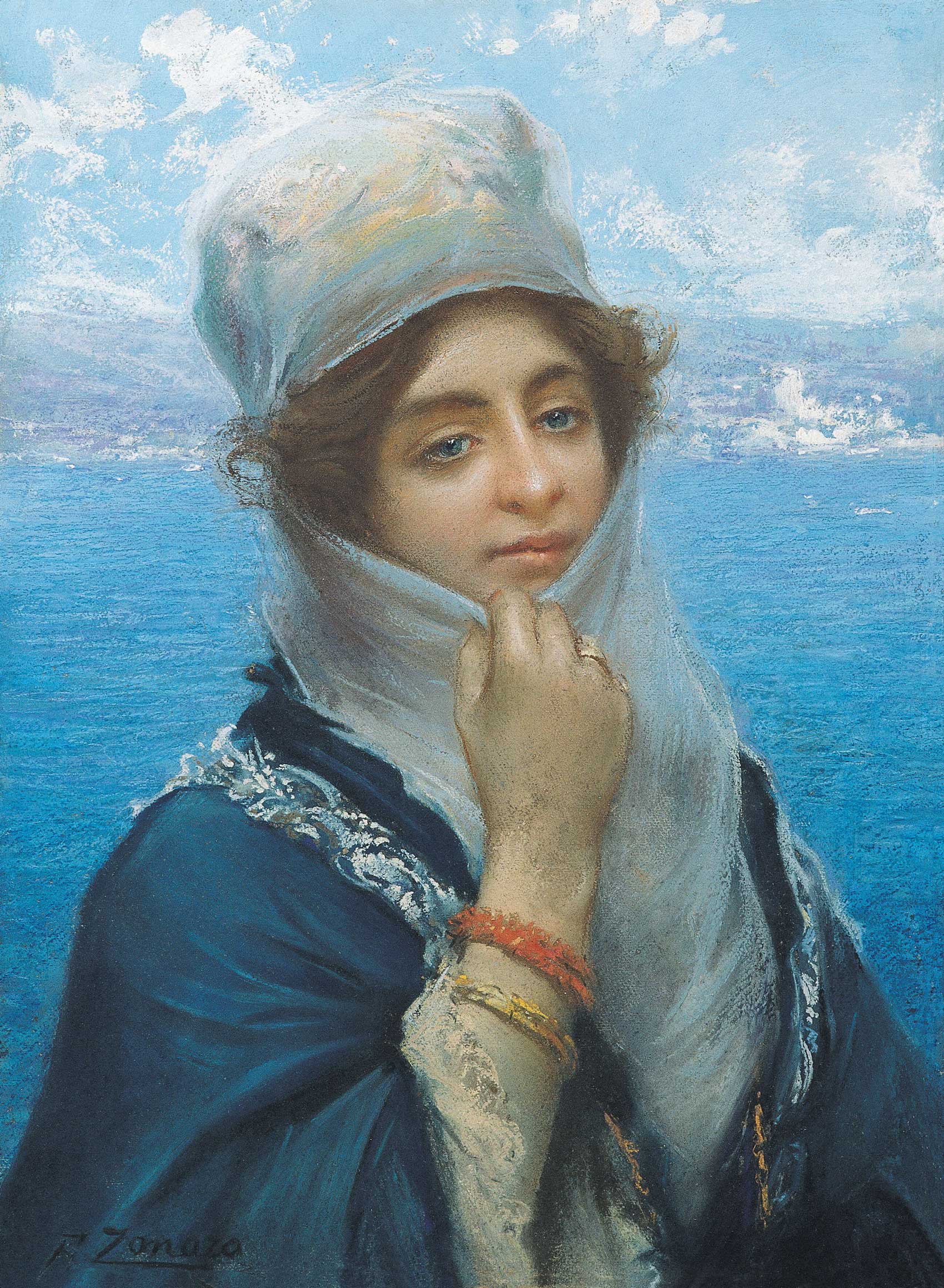

When regarding the paintings of Istanbul by western painters, Golden Horn has a distinctive place and value. This body of water that separates the Topkapı Palace and the Historical Peninsula, in which monumental edifices are located, from Galata, where westerners and foreign embassies dwell, is as though an interpenetrating boundary.
Tuesday - Saturday 10:00 - 19:00
Friday 10:00 - 22:00
Sunday 12:00 - 18:00
The museum is closed on Mondays.
On Wednesdays, the students can
visit the museum free of admission.
Full ticket: 300 TL
Discounted: 150 TL
Groups: 200 TL (minimum 10 people)